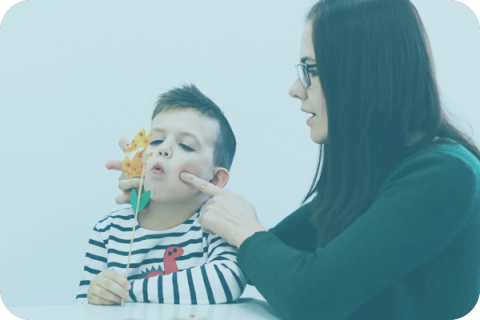Case Study
Pantheon Re-brand (Designing for ourselves)
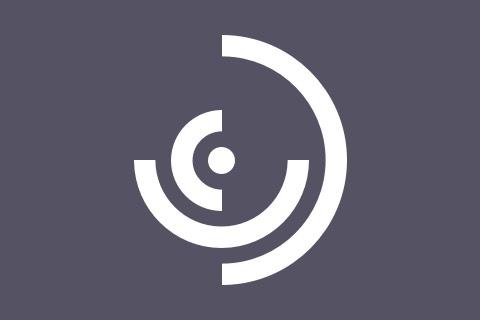
BACKGROUND
OVERVIEW
Pantheon creates technology solutions that solve problems. After assessing our current processes, values, and expertise, we realized our branding and website did not accurately reflect who we were.
So, who are we? Well, we pride ourselves on the way we use data-driven decision making to develop software, utilize an iterative process that delivers continual improvement, and focus on the end user experience. To that effect, we used the same process that we take with clients on ourselves in order to redesign our website and branded assets to better describe the work we do and who we are.
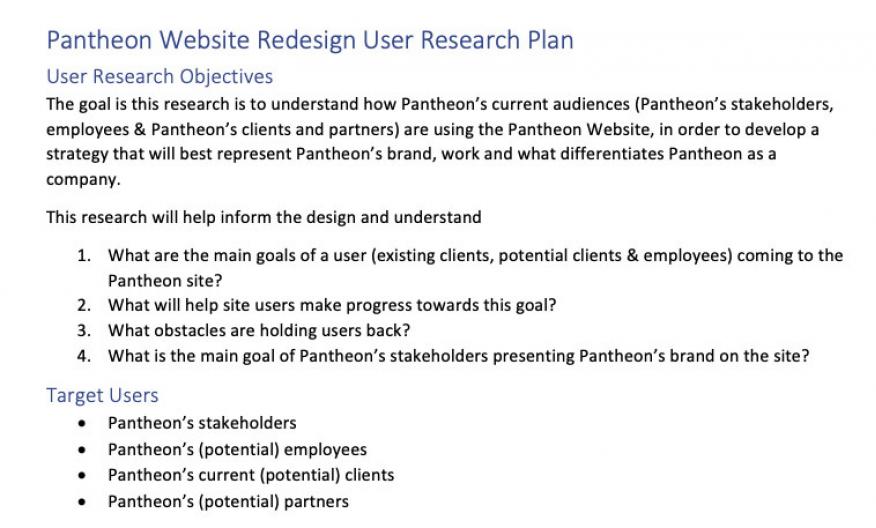
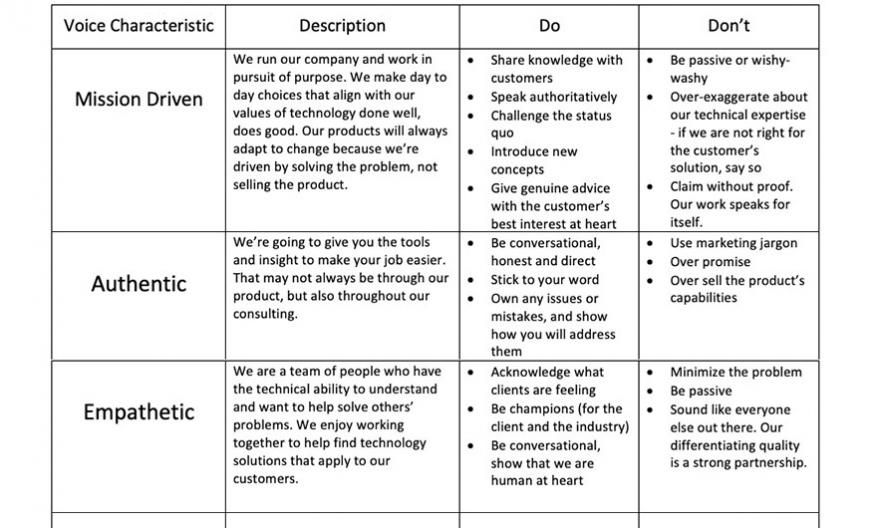
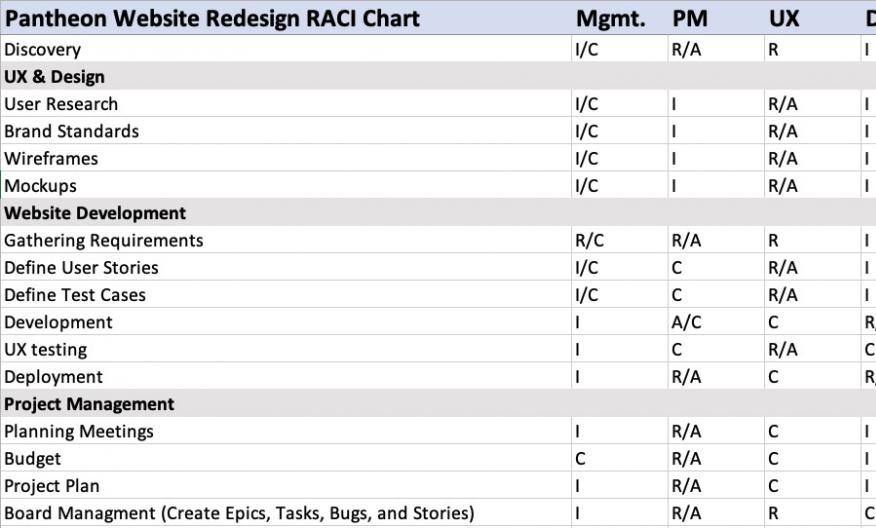
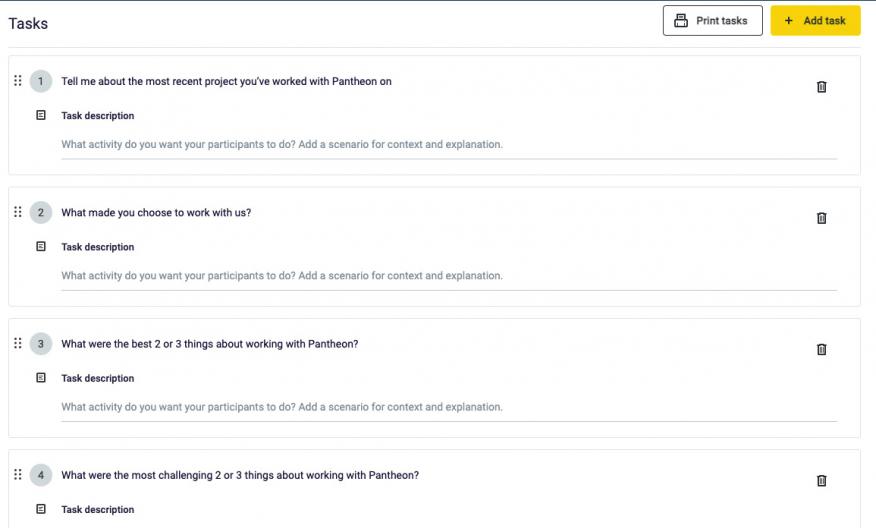
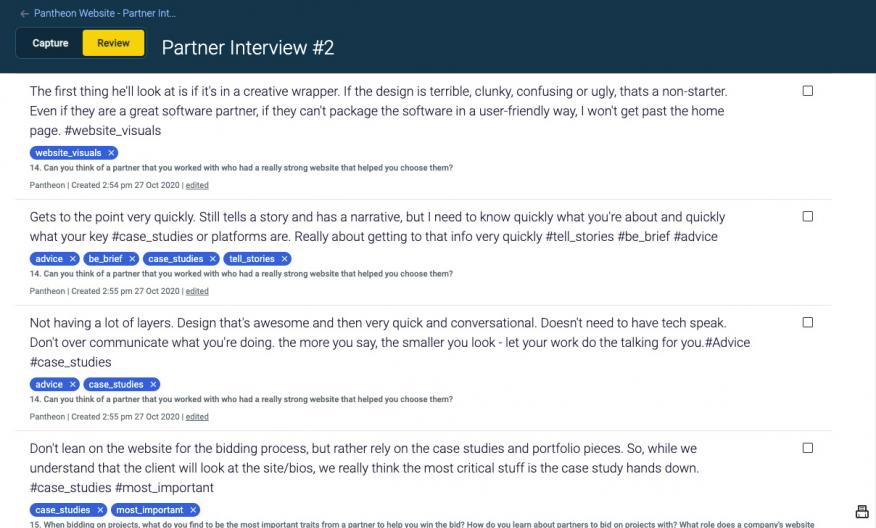
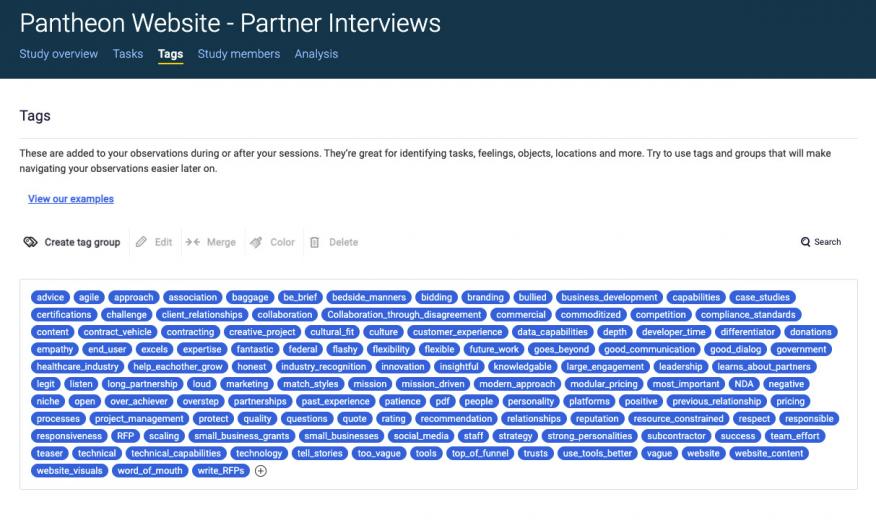
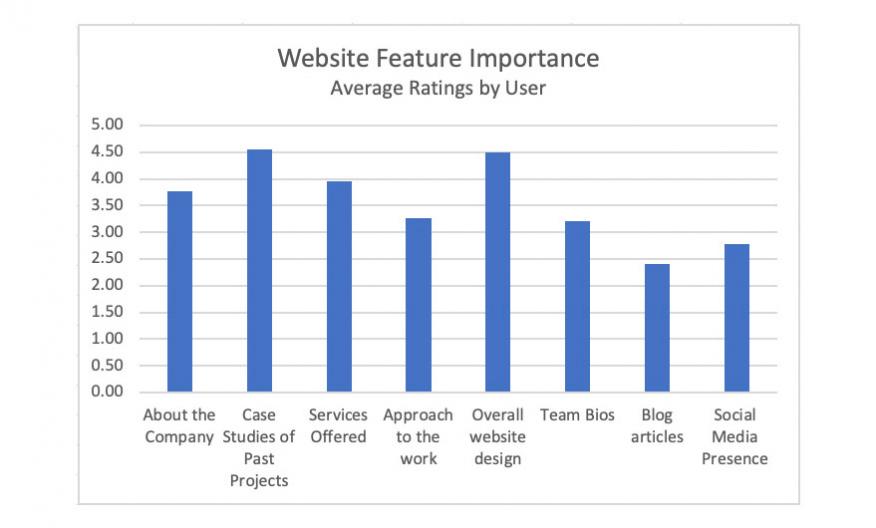
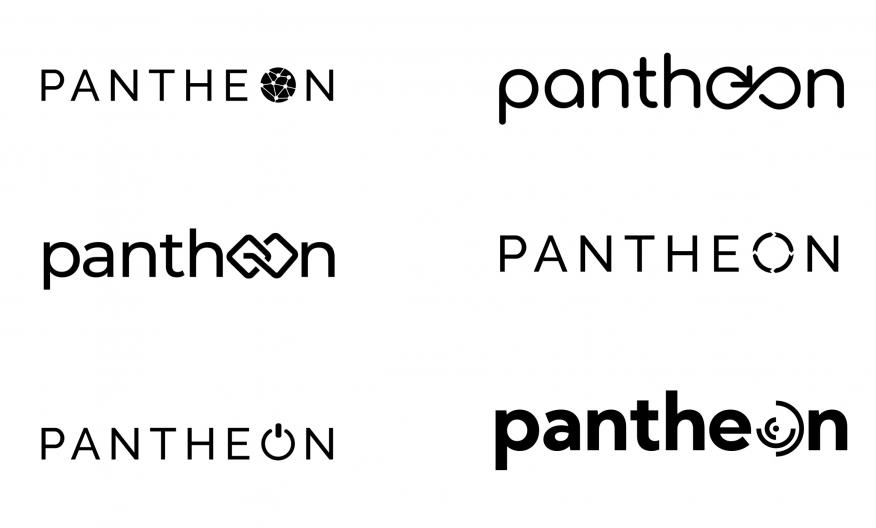
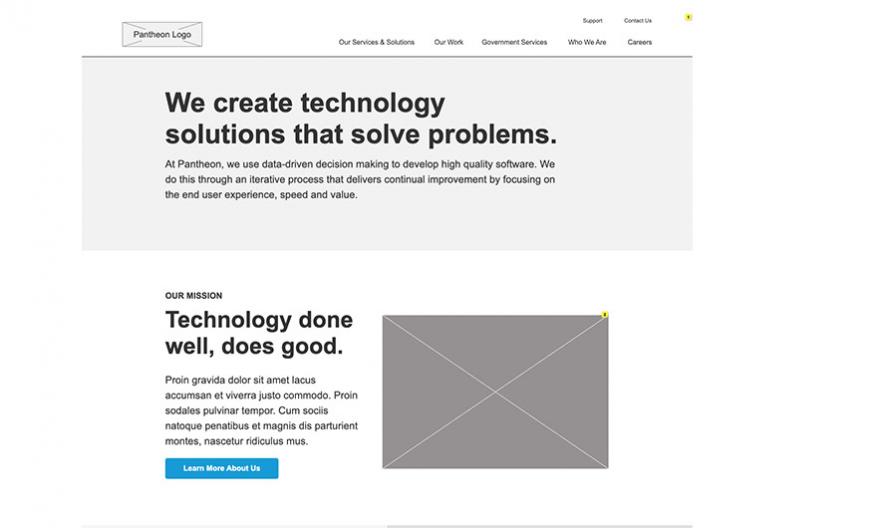
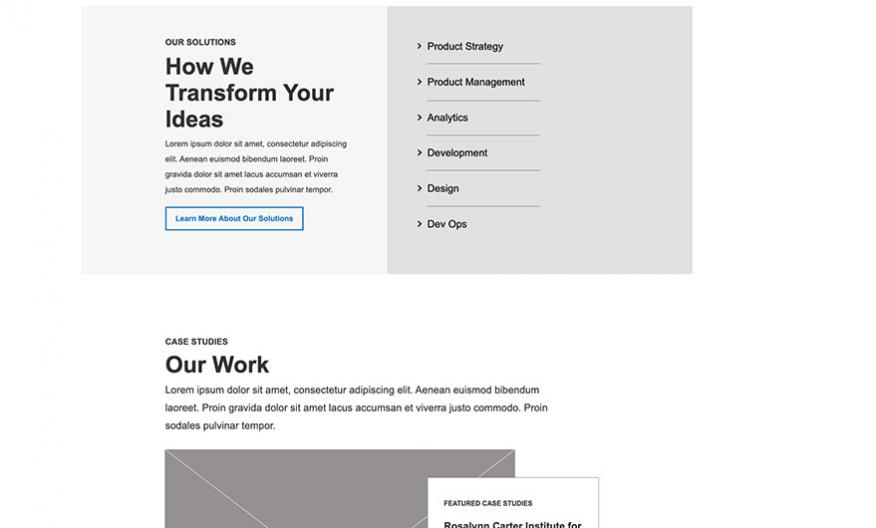
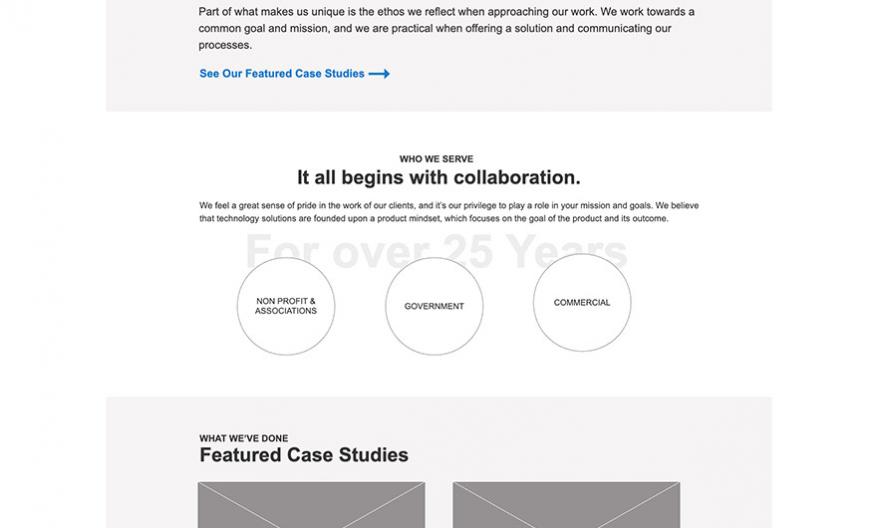
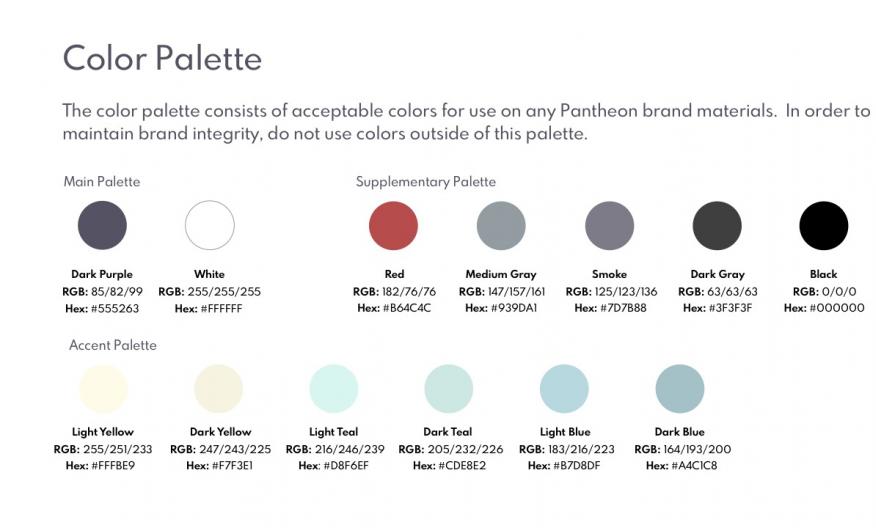
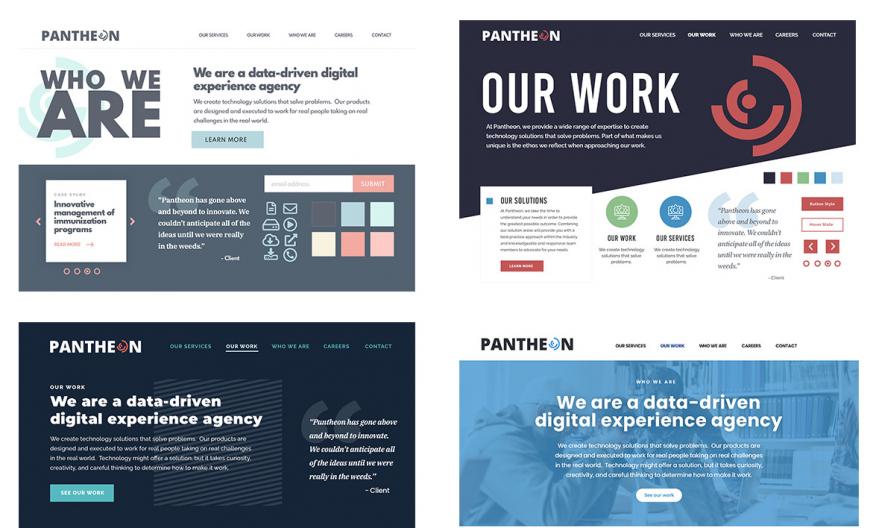
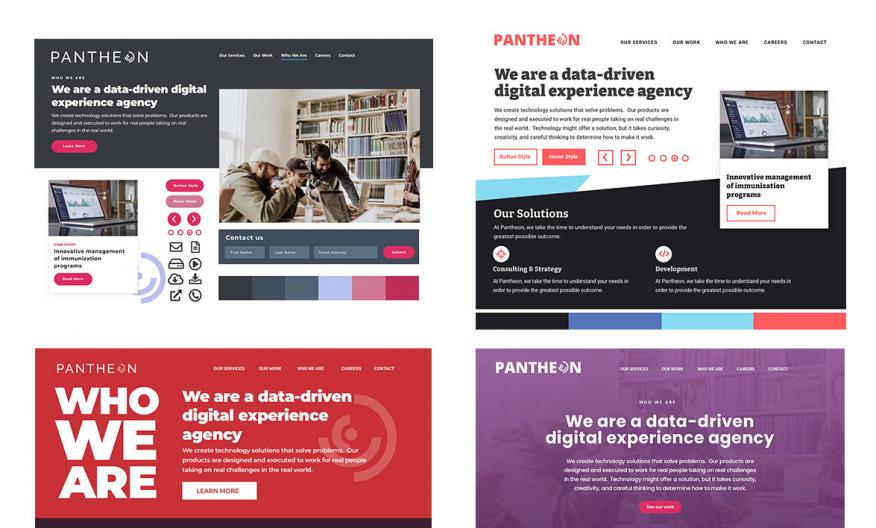
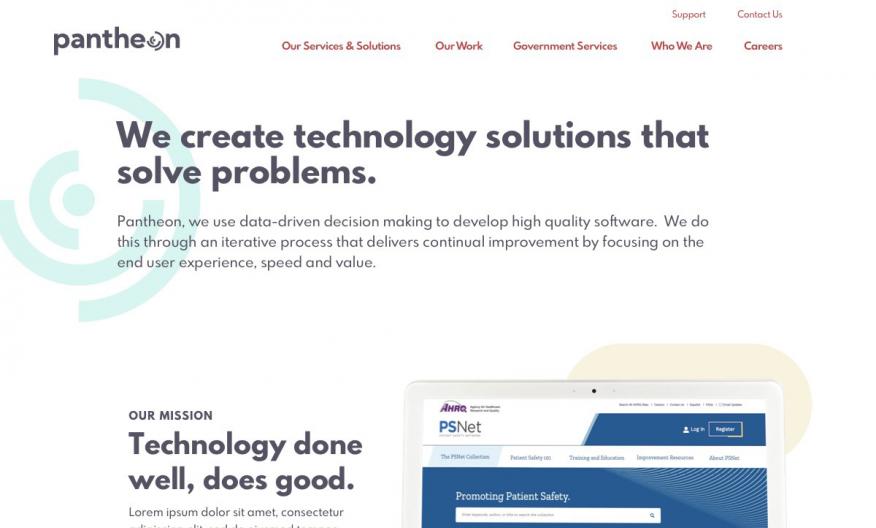
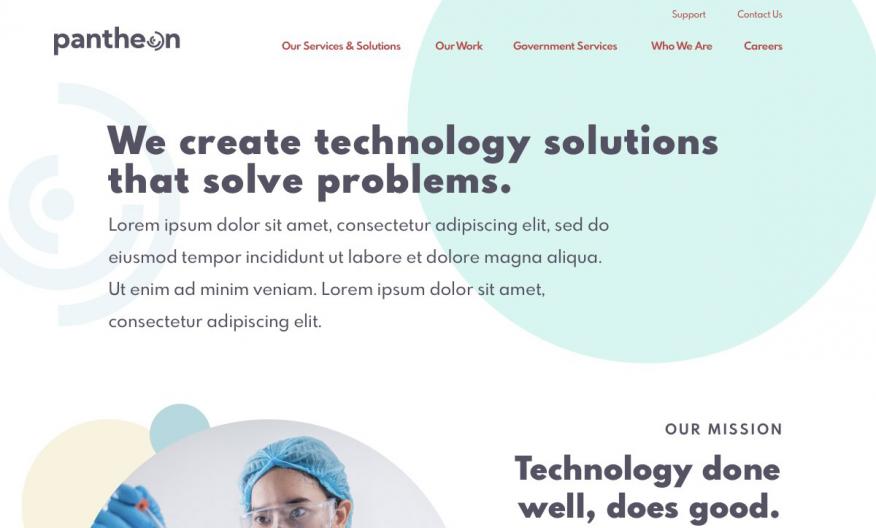
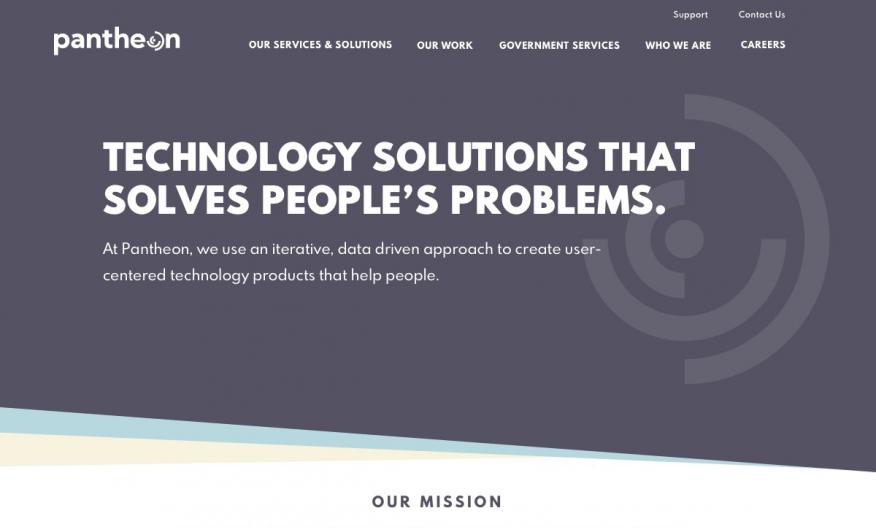
WHAT WE DID
SERVICES PERFORMED
- -Agile-based Technical Project Management
- -User Research via Interviews and Surveys
- -Logo and Brand Redesign
- -Information Architecture
- -UX and Visual Design
- -Drupal Development
- -Content Writing
- -Brand Assets Creation

HOW WE DID IT
OUR APPROACH
Since this was a complete rebrand of Pantheon, we wanted to make sure that we had a firm understanding of Pantheon’s new identity. We conducted research to understand how our target audiences perceived us - what they valued about us as a company, and what made us unique in their eyes. We met with company leadership to understand the rebranded vision, performed market analysis, ran surveys with internal staff, and conducted interviews with potential employees, partners, and clients. The data we collected led to designs and branding decisions that communicate our values and strengths: “Mission-Driven”, “Empathetic”, “Transparent,” and “Authentic.” Specific research on the website highlighted which features were most important to our website audiences, and that research was used to make decisions about site feature prioritization.
We wanted to make sure the voice and tone of the content writing and visual design accurately reflected our values and mission. A voice guide was developed which now informs our communications. We designed and iterated on dozens of logo variations that conveyed our values. Style tiles were created to show the various approaches our brand could take. These tiles contained multiple options on how we could approach icon styles, color palettes, and font types. We again used a data-driven process by surveying team members and partners to get their feedback and thoughts. We researched color theory to understand the feelings and emotions our color palettes options conveyed to find the one that matches our company values.
We re-designed and created PowerPoint decks, proposal templates, usability reports, and a brand guide, among other assets. The sprint process gave us flexibility to prioritize the most important work first and ensure workload balancing across team members so that it could be completed alongside other project work.
With stakeholder goals, a voice and tone guide, user research data, and competitor data in hand, we embarked on the website design process. This process included not only the wireframing and UI design of the new website, but also ensuring that the site reflected Pantheon’s new identity. We used our research to create a site architecture that matched the goals and the expectations of our audience. We started with wireframing, and then moved onto UI Design. Once the UI Design was finalized, we were able to put together a UI Kit and tackle the brand assets.
RESULTS
THE SOLUTION
Pantheon’s branded assets were designed and finalized by a team of creative individuals and their work was launched in the Spring of 2021. Shortly after, the Pantheon website re-design was built using a Drupal-based Content Management System to allow for future updates as we continue to iterate our brand. We have received positive feedback so far, but will continue to use data to make decisions and updates to our design and content in the future. We rolled out what we considered a minimum viable product (MVP), and have plans to grow it over time - making iterative improvements to the site, treating it with a product mindset the way we would encourage any client to treat their web products.
- - Brand Redesign
- - Drupal-based Content Management
- - User-Centered Design
- - Goal-based Information Architecture



